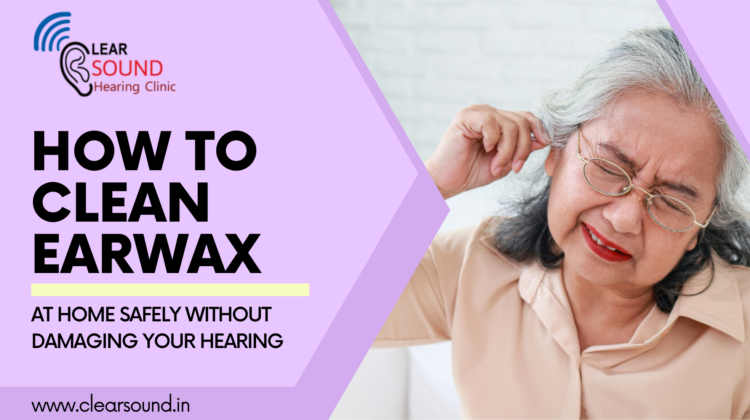
How to Clean Earwax at Home Safely Without Damaging Your Hearing
Earwax, the yellowish-sticky substance, has advantages as well as disadvantages for our ears.
On the positive side, it catches dust, stopping them from getting deep inside our ears. Also, earwax helps to keep our ear canals moist, preventing dryness. This moisture is like lotion for the skin inside our ears.
On top of that, earwax fights off the bad germs! It has special properties that prevent bacteria and fungi from growing ensuring that our ears stay safe & free from any infections.
However, sometimes this wax can build up causing discomfort or even affecting your hearing. In this blog, we’ll explore signs & symptoms of excessive earwax, how to clean ears at home without risking harm to your hearing & some harmful practices you should avoid.
Signs & symptoms of Excessive Earwax Buildup
One common sign that you might have too much earwax is if your ear hurts, which is known as earache, it can be mild or strong. Another sign is when you feel like you can’t hear as well as you normally do. This happens because the extra wax can block the ear canal and stop sounds from getting through properly.
Sometimes, having too much earwax can make your ears ring or buzz. It’s like hearing sounds that aren’t really there. It might be a high-pitched noise or a low buzzing, and it can be quite bothersome. Along with these, you might feel like your ear is full or stuffed up like something is blocking it. This feeling of fullness in your ear might make you want to clear it, but be careful not to put anything inside your ear to avoid making it worse. Below is one of the easy methods for how to clean ears wax.
Safe way to How to clean wax in ears
Softening Drops: Use ear drops specifically designed to soften earwax. These drops often contain oils like almond oil, olive oil, or glycerin. Follow the instructions on the package and put a few drops into your ear. This helps to loosen the wax, making it easier to remove.
Warm Water Rinse: After using softening drops, gently rinse your ear with warm water. Tilt your head to the side and gently pour some water into your ear. Let it drain out by tilting your head the other way. Avoid using forceful pressure, as it can damage your eardrum.
Damp Cloth: You can wipe the outer part of your ear with a damp cloth to remove any wax that has moved closer to the surface. Never insert the cloth or any object into your ear canal.
Avoiding Harmful Practices
While it’s essential to clean your ears, certain practices should be avoided as they can cause harm:
Avoid Overly Aggressive Cleaning
Don’t excessively clean your ears with vigorous motions or excessive force. This can irritate the ear canal, leading to increased wax production or potential injury.
Avoid Using Cotton Swabs or Inserted Objects
Inserting cotton swabs or other objects into your ears can push the wax deeper into the ear canal leading to potential damage or blockages.
Say No to Sharp or Pointed Instruments
Using sharp objects like hairpins, keys, or toothpicks to remove earwax is highly risky and can cause injury, infections, or damage to delicate ear structures.
Minimize Earphone & Headphone Usage for Healthy Ears
Limiting the usage of earphones or headphones is essential as it can increase the chances of excessive wax buildup in the ears.
If you have excessive earwax buildup, severe pain, hearing loss, or any concerns about your ears, consult a healthcare professional.
To conclude…
Taking care of your ears is crucial for maintaining good hearing health. Knowing how to clean earwax at home safely can prevent discomfort and potential hearing issues. Remember, gentle methods like softening the wax with drops are safer alternatives compared to inserting objects into your ears.
If you’re experiencing any changes in your ability to hear, or facing persistent ear issues, then Clear Sound Hearing & Speech Clinic is your reliable partner in ensuring your hearing health remains at its best.








